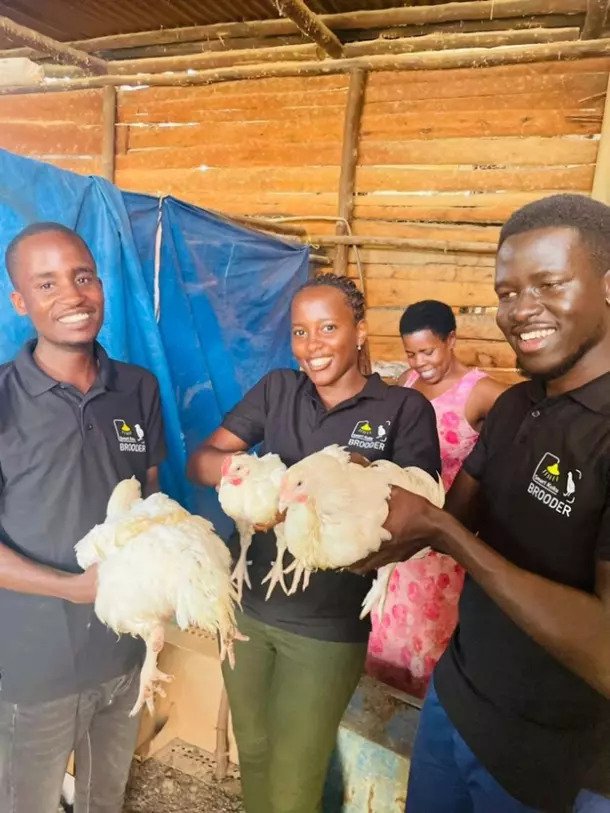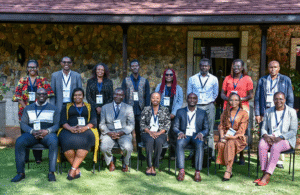By Zablon Oyugi, July 3, 2025- A new flagship report by the Food and Agriculture Organization of the United Nations (FAO), The Status of Youth in Agrifood Systems, calls for urgent policy shifts to harness the unrealized potential of young people—85% of whom live in agrifood systems in lower‑income countries.
Youth—defined as those aged 15–24—constitute the majority in many agrifood systems across Africa, Asia, and Latin America. FAO underscores that with nearly 60% of Sub‑Saharan Africa’s population under 25, approximately eight million young Africans enter the labor market each year.
Globally, agrifood systems—spanning production, processing, packaging, distribution, and retail—employ over a billion people, with more than half living in low‑income countries.
Despite the sector’s sheer scale, youth employment remains fragile, with high rates of under- and unemployment, particularly in rural areas. In Sub‑Saharan Africa, youth unemployment hit 30.6% in North Africa and 12.9% in the region overall, per FAO‑supported data.
That includes nations like Kenya—where nearly 39% of 18–34‑year‑olds were unemployed at the 2019 census. With such challenges come both risks of social instability and a rare chance to tap a demographic dividend—if young people are equipped through agrifood systems.
Contrary to assumptions of rural exodus, farming remains the leading source of employment for youth in countries studied by FAO in Africa—Nigeria, Tanzania, and Rwanda.
However, downstream agrifood segments—processing, logistics, retail—are expanding rapidly, albeit from small bases. FAO finds off‑farm agrifood jobs in rural areas are increasing faster than agricultural roles, signaling a structural shift.
This evolution reflects global dietary changes: as consumers demand more processed and value‑added foods, youth can find new opportunities through skills training, entrepreneurship, and technical innovation in agrifood value chains.
Barriers to Youth Engagement
The FAO report identifies several hurdles restricting youth from fully entering agrifood systems:
- Limited access to land and finance: Youth and rural women often lack collateral for loans, with household credit systems biased against them.
- Low skills and training: Most rural youth are “low skilled and low educated,” making it hard to move into higher-value roles.
- Policy and capacity gaps: While many countries seek to transform their food systems, there is a severe shortage of personnel trained in integrated agrifood approaches.
- Gender inequality: Young women face additional hurdles in accessing land, financing, and decent roles in agrifood systems.
These barriers keep youth trapped in low‑return, subsistence roles, limiting national development.
FAO’s Bold Call: Seize the Moment
The Status of Youth in Agrifood Systems urges governments and partners to take decisive action. FAO proposes a suite of integrated measures:
- Invest in vocational and experiential learning: Blend technical training with mentorship via small‑enterprise incubators and Junior Farmer Field and Life Schools (JFFLS).
- Provide land and finance: Dedicate underutilized land, support secure tenure, and create youth‑friendly financing schemes.
- Strengthen agrifood capacity: Scale up training of agrifood professionals and extension workers to bridge technical gaps.
- Make gender part of the solution: Ensure programs are gender‑responsive, improving equity in land access, training, and leadership.
- Link to global agendas: Align with the UN Decade of Family Farming (2019–2028) to support smallholder youth farmers through policy and investment.
Demographic forecasts show Sub‑Saharan Africa’s population will continue to grow fast—rural populations are projected to increase by over 50% by 2050. With such a youthful and growing workforce, agrifood systems must transform to provide quality employment.
FAO stresses that no country has successfully industrialized without first boosting agricultural productivity. Engaging youth through agrifood is not just economic—it’s essential for stability, food security, and climate resilience.
FAO’s JFFLS model in Tanzania and Malawi trained young farmers, with a 1:20 multiplier effect as trainees mentor peers. Initiatives in agroecology—involving traditional practices like zaï water harvesting in West Africa—offer more sustainable, employment-intensive farming for youth.
Yet scaling these models requires aligned policies and multisector collaboration. FAO recommends embedding youth pathways across strategies—linking agrifood to education, finance, digital access, and rural infrastructure.
FAO’s The Status of Youth in Agrifood Systems is both warning and blueprint. With 85% of youth in lower‑income countries working in agrifood systems—often in precarious roles—and with demographic trends promising a youthful surge, the international community has a clear opportunity.
By unlocking agrifood systems—through skills, equity, innovation, and investment—policymakers can create decent livelihoods, food system resilience, and sustainable development. In FAO’s words, this is a “once‑in‑a‑lifetime” moment to empower youth and transform tomorrow’s food systems.







